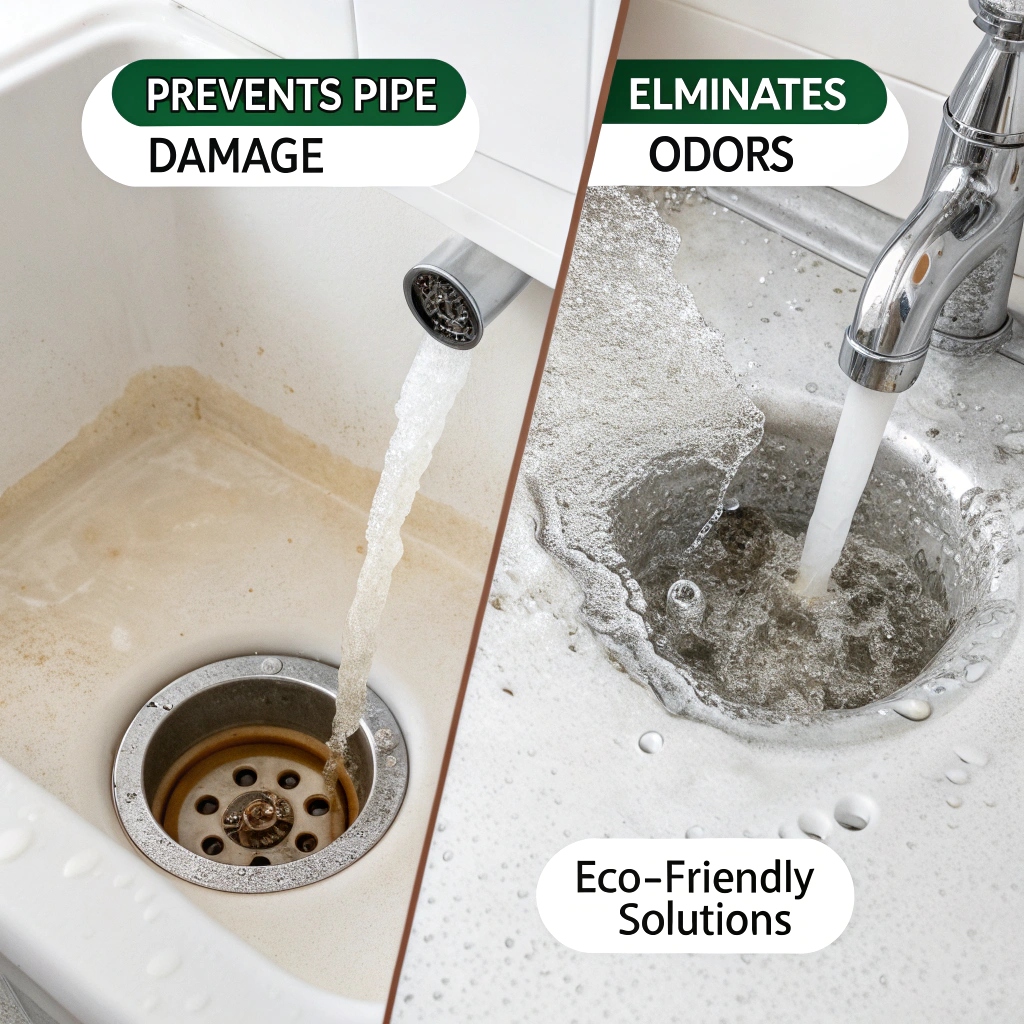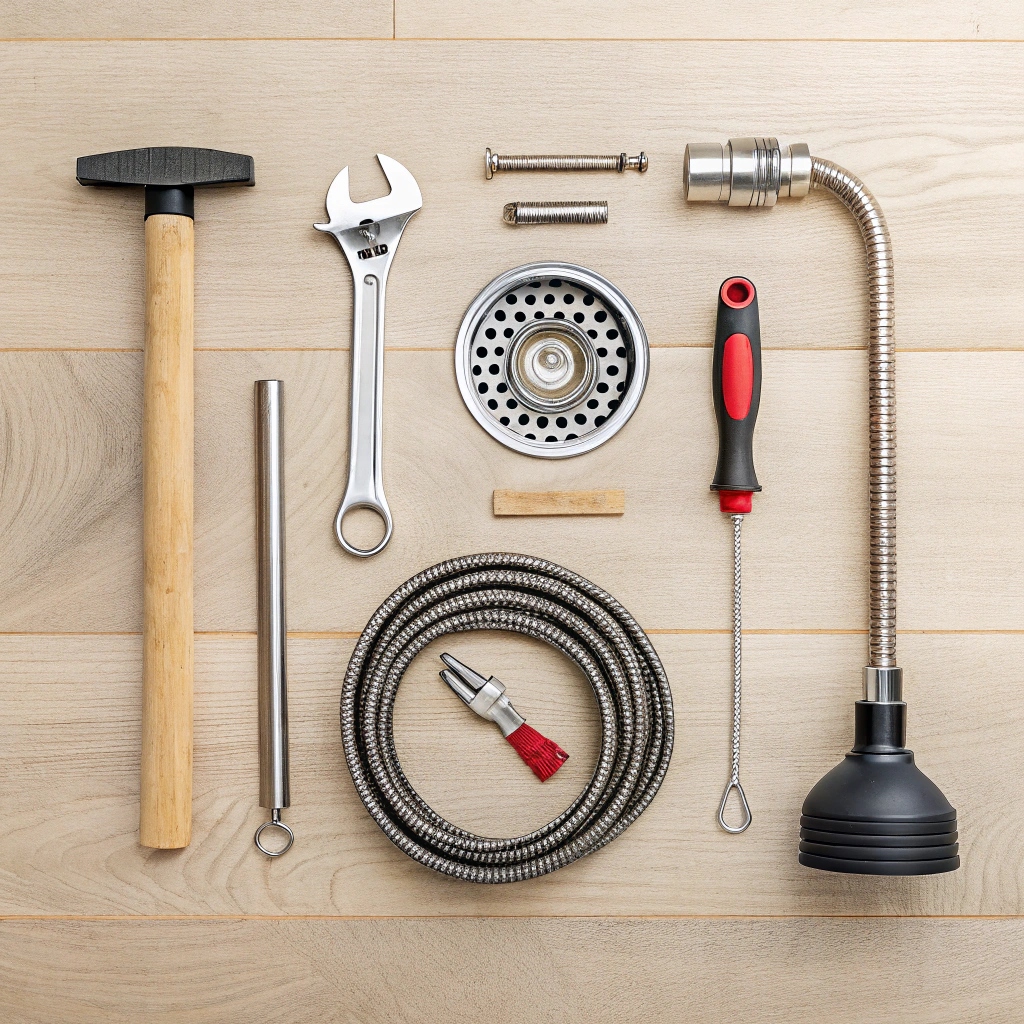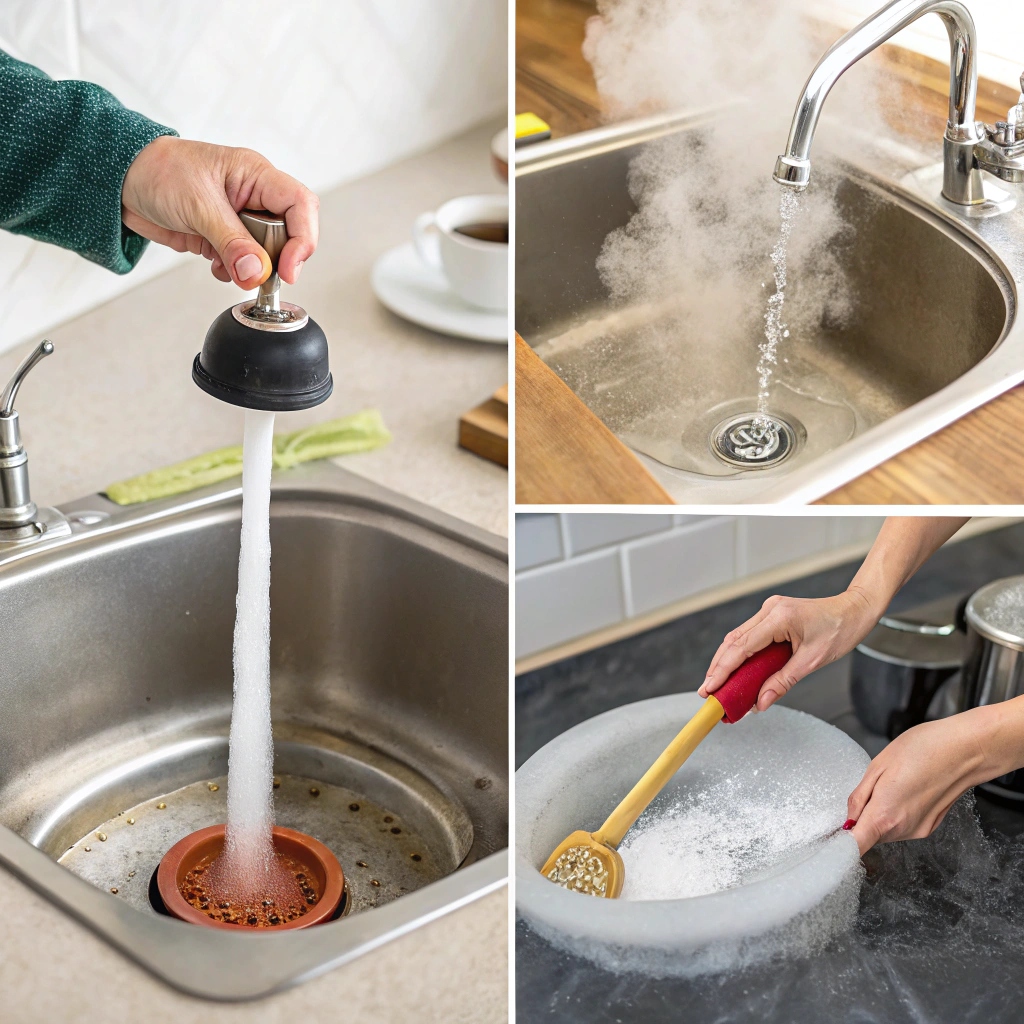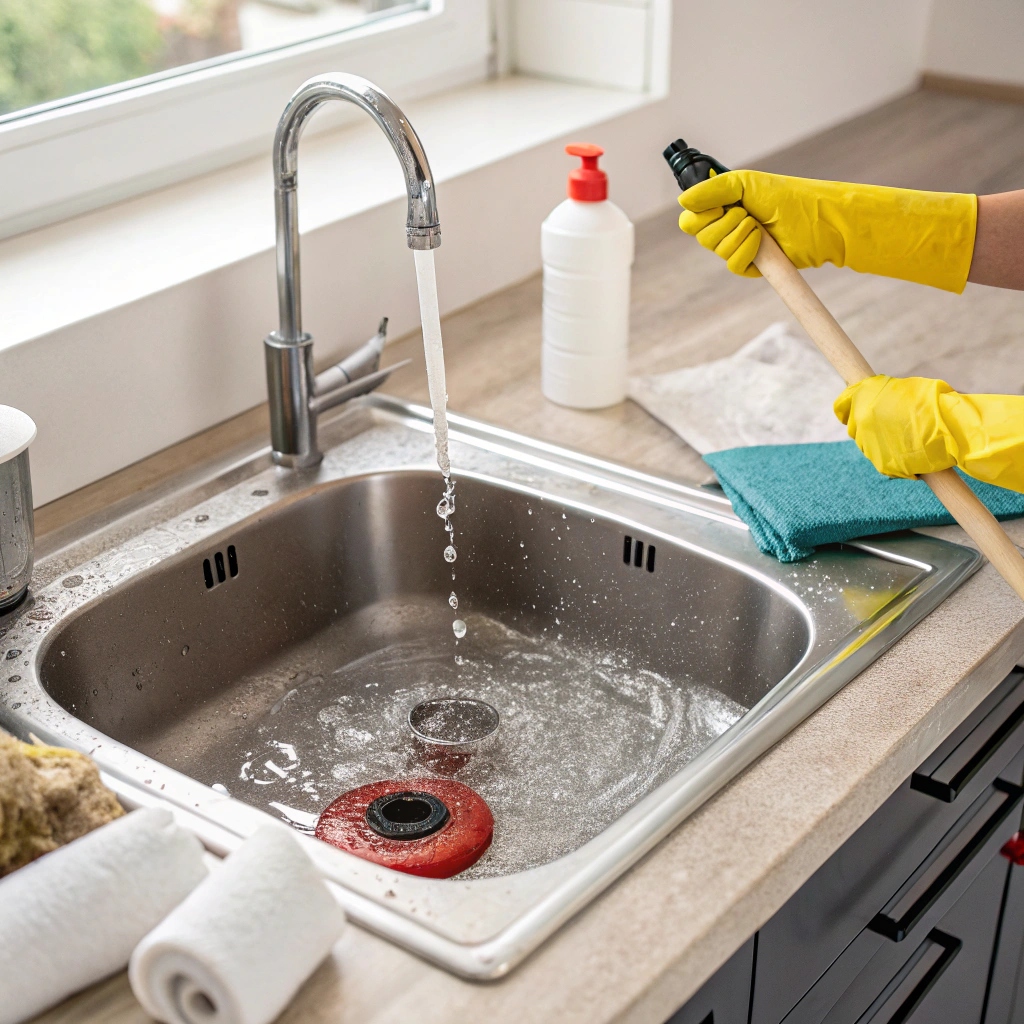Introduction
A clogged drain can be more than just an inconvenience—it can disrupt daily routines, lead to foul odors, and even cause plumbing damage if left untreated. Whether you’re dealing with a slow-draining sink, a backed-up shower, or a kitchen drain filled with grease, knowing how to clear the blockage effectively can save you time and money.
Many commercial drain cleaners contain harsh chemicals that can corrode pipes and harm the environment. Instead, using practical, safe, and effective methods can help restore proper drainage without unnecessary risks. In this guide, you’ll discover the best techniques to unclog a drain, from DIY solutions to professional-grade methods.
Key Benefits

Understanding the benefits of clearing a clogged drain properly helps you choose the best method while maintaining your plumbing system’s health. Here’s why these techniques matter:
- Prevents Pipe Damage – Avoids corrosive chemicals that weaken pipes over time.
- Saves Money – Reduces the need for costly professional plumbing services.
- Eco-Friendly Solutions – Uses natural alternatives that won’t harm water systems.
- Eliminates Odors – Removes trapped food, grease, and debris that cause bad smells.
- Prevents Future Clogs – Encourages regular maintenance to keep pipes clear.
By using safe and effective methods, you not only fix the current issue but also prevent recurring blockages.
Ingredients (Tools & Supplies Needed)

Before starting, gather the right tools and supplies to tackle the clog efficiently:
Basic Supplies:
- Plunger – Works well for sinks, tubs, and toilets.
- Drain Snake (Auger) – Helps break up deeper clogs.
- Boiling Water – Dissolves grease and soap buildup.
- Baking Soda & Vinegar – A natural reaction that loosens debris.
- Salt & Hot Water – Helps dissolve minor blockages.
- Dish Soap – Cuts through grease in kitchen sinks.
Advanced Tools (For Stubborn Clogs):
- Wet/Dry Vacuum – Suctions out deep clogs.
- Plumbing Wrench – For dismantling pipes if necessary.
- Enzyme Drain Cleaners – Safe, non-toxic bacteria-based cleaners.
Having these on hand makes the unclogging process smoother and more effective.
Instructions: How to Clear a Clogged Drain

Follow these step-by-step methods based on the severity of the clog:
Method 1: Boiling Water (For Minor Clogs)
- Bring a large pot of water to a rolling boil.
- Carefully pour the water down the drain in two or three stages, allowing it to work for a few seconds between pours.
- Test the drain by running tap water. Repeat if needed.
Method 2: Baking Soda & Vinegar (Natural Solution)
- Pour ½ cup of baking soda directly into the drain.
- Add 1 cup of vinegar and immediately cover the drain to trap the reaction inside.
- Let it sit for 15–30 minutes to break down debris.
- Flush with boiling water.
Method 3: Plunger (For Stubborn Clogs)
- Fill the sink or tub with enough water to cover the plunger’s rubber cup.
- Place the plunger over the drain, ensuring a tight seal.
- Push and pull forcefully for 20–30 seconds, maintaining suction.
- Remove the plunger and check if the water drains properly. Repeat if necessary.
Method 4: Drain Snake (For Deep Clogs)
- Insert the drain snake into the drain opening.
- Turn the handle to push the coil deeper and break up the blockage.
- Slowly pull it back, removing any trapped debris.
- Flush the drain with hot water to clear any remaining particles.
If none of these methods work, consider checking the P-trap under the sink or using an enzyme cleaner to dissolve organic waste.
Pro Tips and Variations
- For Grease Buildup: Use dish soap and boiling water to dissolve fatty deposits.
- For Hair Clogs: Try a drain snake or hook to remove tangled hair.
- For Toilet Clogs: Use a flange plunger specifically designed for toilets.
- For Outdoor Drains: Use a high-pressure garden hose to flush out blockages.
- Prevent Future Clogs: Regularly flush drains with hot water and avoid disposing of grease, coffee grounds, and food scraps down the sink.
Small preventative steps can save you from future blockages and plumbing repairs.
Conclusion
A clogged drain doesn’t have to be a major headache. By using the right tools and techniques, you can quickly and safely restore proper drainage without expensive plumbing services. Simple methods like boiling water, baking soda and vinegar, or plunging can often resolve the issue. For tougher clogs, a drain snake or wet/dry vacuum may be necessary.
Regular maintenance and preventative habits—such as using drain strainers and avoiding grease buildup—can help keep your plumbing in top shape. With these tips, you can tackle clogged drains confidently and keep your pipes flowing smoothly.
FAQs
How do you clear a clogged drain?
Start with boiling water, followed by a baking soda and vinegar solution. If the clog persists, use a plunger or drain snake to break it up. For deep clogs, a wet/dry vacuum or enzyme cleaner may be necessary.
How to unblock a badly blocked drain?
For severe blockages, remove standing water first. Then, try a plunger or drain snake to dislodge the clog. If that doesn’t work, check the P-trap under the sink or use a plumbing auger for deep clogs.
What can I pour down a drain to unblock it?
Hot water, baking soda and vinegar, or a salt and boiling water mixture are effective DIY solutions. Avoid chemical drain cleaners, as they can damage pipes over time.
What is the best thing to put down a drain to unclog it?
The best approach depends on the type of clog. For grease clogs, use dish soap and boiling water. For hair clogs, use a drain snake. For deep blockages, try a plumbing auger or enzyme-based cleaner.

